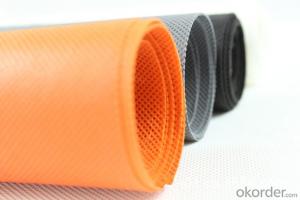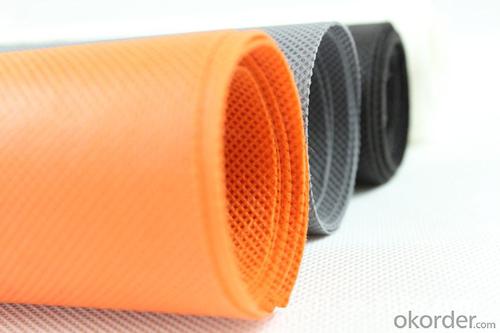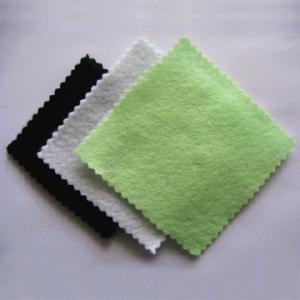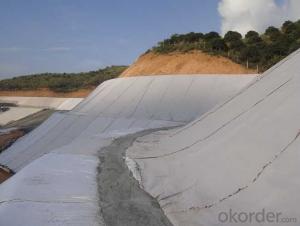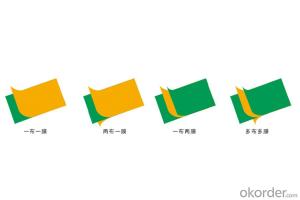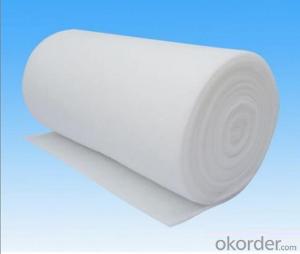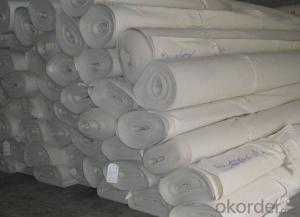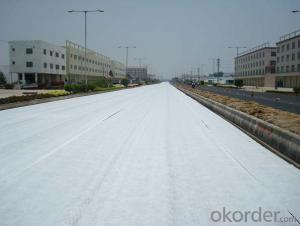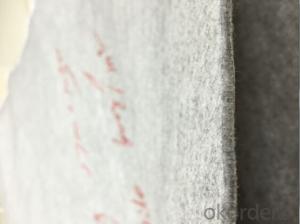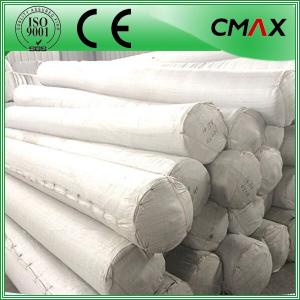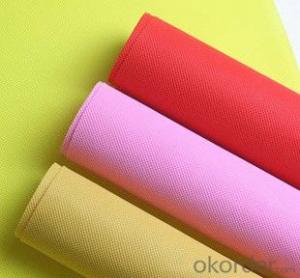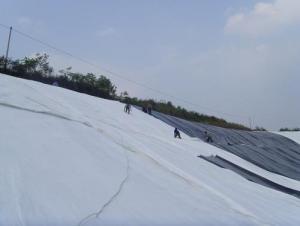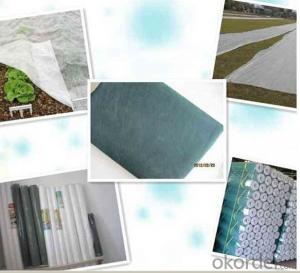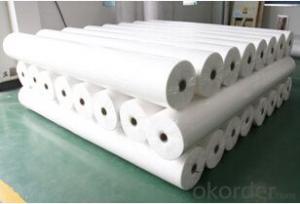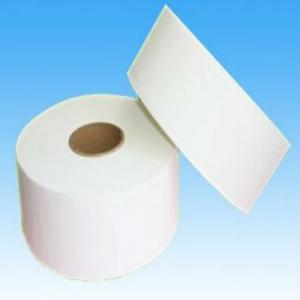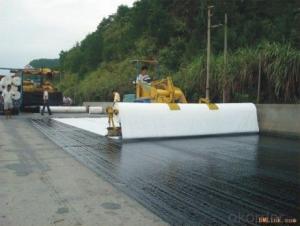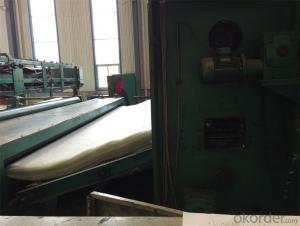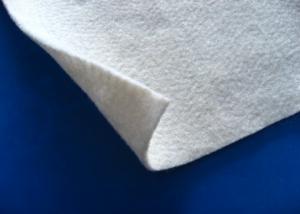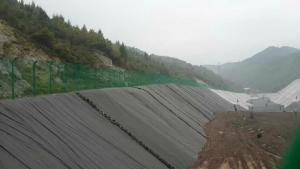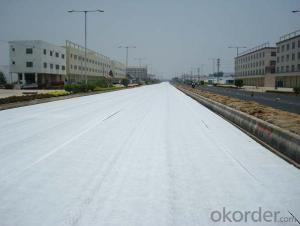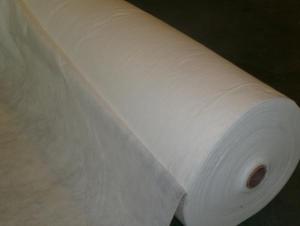Best Geotextile PP Spunbonded Nonwoven Fabric Blue and Red
- Loading Port:
- China Main Port
- Payment Terms:
- TT OR LC
- Min Order Qty:
- -
- Supply Capability:
- -
OKorder Service Pledge
OKorder Financial Service
You Might Also Like
PP Spunbonded Nonwoven Fabric different color for agriculture
Specification of Polypropylene Spunbond Non Woven Fabric:
| | |
Material | 100% Polypropylene/100%PP |
Width | 0.4--3.2M |
Color | Any color available |
Roll Length | According to your requirement |
Technics | Nonwoven |
Nonwoven Technics | Spunbonded |
Pattern | Yarn Dyed |
Weight | 9-200GSM |
Style | Plain |
Feature | Waterproof,Mothproof,Eco-friendly,Non-toxic,Breathable,Anti-Bacteria |
Certification | ISO9001 |
Usage | Agriculture,Indrustry,Construction,Packaging,Home-textitle, etc |
MOQ | 1Ton/1000KG |
Payment Terms | T/T or L/C |
Delivery Time | Within 7-15 days |
Packaging Detail | Plastic film in roll |
| Shandong,China |
Loading of Port | Qingdao |
Sample | Free samples are available |
Introduction of polypropylene spunbond non woven fleece fabric is used to protect the crops in agriculture UV resistance masterbatch could be added 1%~8%. It can protect the vegetable crops and new lawns against extreme weather, animal and insect damage, yet allows light, water and air to penetrate, creating protected growing conditions..
- Q: What are the different design considerations for geotextile applications?
- Some of the different design considerations for geotextile applications include the type and properties of the geotextile material, the site conditions and requirements, the desired functions and performance criteria, the installation and construction methods, and the long-term durability and maintenance requirements. Additionally, factors such as cost-effectiveness, environmental impact, and regulatory compliance also need to be taken into account during the design process.
- Q: Roof garden drainage board and cover two layers of geotextile need to do what inspection lot
- I am specializing in the production of drainage board and geotextile and other materials, wish smooth
- Q: Differences between staple acupuncture nonwoven geotextile and filament spunbonded nonwoven geotextile
- Appearance of different shapes: staple acupuncture non-woven geotextile in the appearance of the surface of the fiber is shorter, and filament spunbond acupuncture non-woven geotextile surface fiber longer. Different materials: staple acupuncture non-woven geotextile with PET polyester staple fiber acupuncture, and filament spunbond acupuncture non-woven geotextile made of polyester chips. Production equipment and different technology: staple acupuncture non-woven geotextile is the polyester staple fiber through the mixing - clutter - comb - shop - acupuncture, and filament spunbond acupuncture non-woven geotextile is the polyester Sliced hot melt - spinning - carding - shop - acupuncture. Implementation of different standards: staple acupuncture non-woven geotextile implementation of GB / T-2008 standards, and filament spunbond acupuncture non-woven geotextile implementation of GB / T-2008 standard. The same specifications of filament spunbonded acupuncture non-woven geotextile quality is better than staple acupuncture non-woven geotextile. Price: the same specifications of polyester staple acupuncture non-woven geotextile price is lower than filament spunbond acupuncture non-woven geotextile.
- Q: Can geotextiles be used in railway track stabilization?
- Yes, geotextiles can be used in railway track stabilization. Geotextiles are widely used in civil engineering projects to improve the stability, durability, and performance of the structures. In railway track stabilization, geotextiles can be placed beneath the ballast to prevent the mixing of finer particles with the ballast, reduce track settlement, and enhance the overall stability of the track. Additionally, geotextiles can also help in improving drainage and reducing the maintenance requirements of the railway track.
- Q: Can geotextiles be used in the construction of golf course bunkers?
- Yes, geotextiles can be used in the construction of golf course bunkers. Geotextiles are often used as a liner or barrier material to separate the bunker sand from the underlying soil, reducing contamination and improving drainage. They help to stabilize the sand and prevent erosion, ensuring the bunker remains in good condition over time.
- Q: How do geotextiles help in preventing weed growth?
- Geotextiles help prevent weed growth by acting as a physical barrier that blocks sunlight, preventing weed seeds from germinating and growing. Additionally, they create an unfavorable environment for weeds by reducing moisture and nutrient availability, ultimately inhibiting their growth.
- Q: What are the environmental impacts of geotextile production?
- The environmental impacts of geotextile production primarily include energy consumption, greenhouse gas emissions, and waste generation. The production process requires significant amounts of energy, mainly derived from fossil fuels, leading to carbon dioxide emissions and contributing to climate change. Additionally, the extraction and processing of raw materials for geotextiles can result in habitat destruction and soil degradation. Furthermore, the production process generates waste, such as wastewater, air emissions, and solid waste, which can have adverse effects on local ecosystems if not properly managed.
- Q: Can geotextiles be used in coastal reclamation projects?
- Yes, geotextiles can be used in coastal reclamation projects. Geotextiles are commonly used to stabilize soil and prevent erosion, making them an effective solution in coastal areas where erosion is a significant concern. These textiles can help to trap sediment, control water flow, and provide stability to newly reclaimed land, making them a valuable tool in coastal reclamation projects.
- Q: Can geotextiles be used in coastal revetment projects?
- Yes, geotextiles can be used in coastal revetment projects. Geotextiles are often employed as a protective layer or a filter between the revetment structure and the native soil, helping to prevent erosion and stabilize the coastline. They can enhance the overall stability and longevity of coastal revetments while allowing for proper water drainage.
- Q: Can geotextiles be used in shoreline stabilization projects?
- Yes, geotextiles can be used in shoreline stabilization projects. Geotextiles are frequently utilized in coastal engineering and shoreline protection projects to prevent erosion and stabilize the shoreline. They act as a barrier between the soil and water, reducing the impact of waves and currents, while still allowing for water drainage. Geotextiles are effective in preventing surface erosion and promoting vegetation growth, making them a valuable tool in shoreline stabilization efforts.
Send your message to us
Best Geotextile PP Spunbonded Nonwoven Fabric Blue and Red
- Loading Port:
- China Main Port
- Payment Terms:
- TT OR LC
- Min Order Qty:
- -
- Supply Capability:
- -
OKorder Service Pledge
OKorder Financial Service
Similar products
Hot products
Hot Searches
Related keywords
